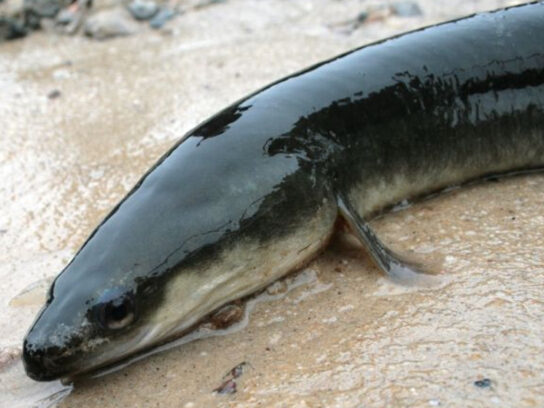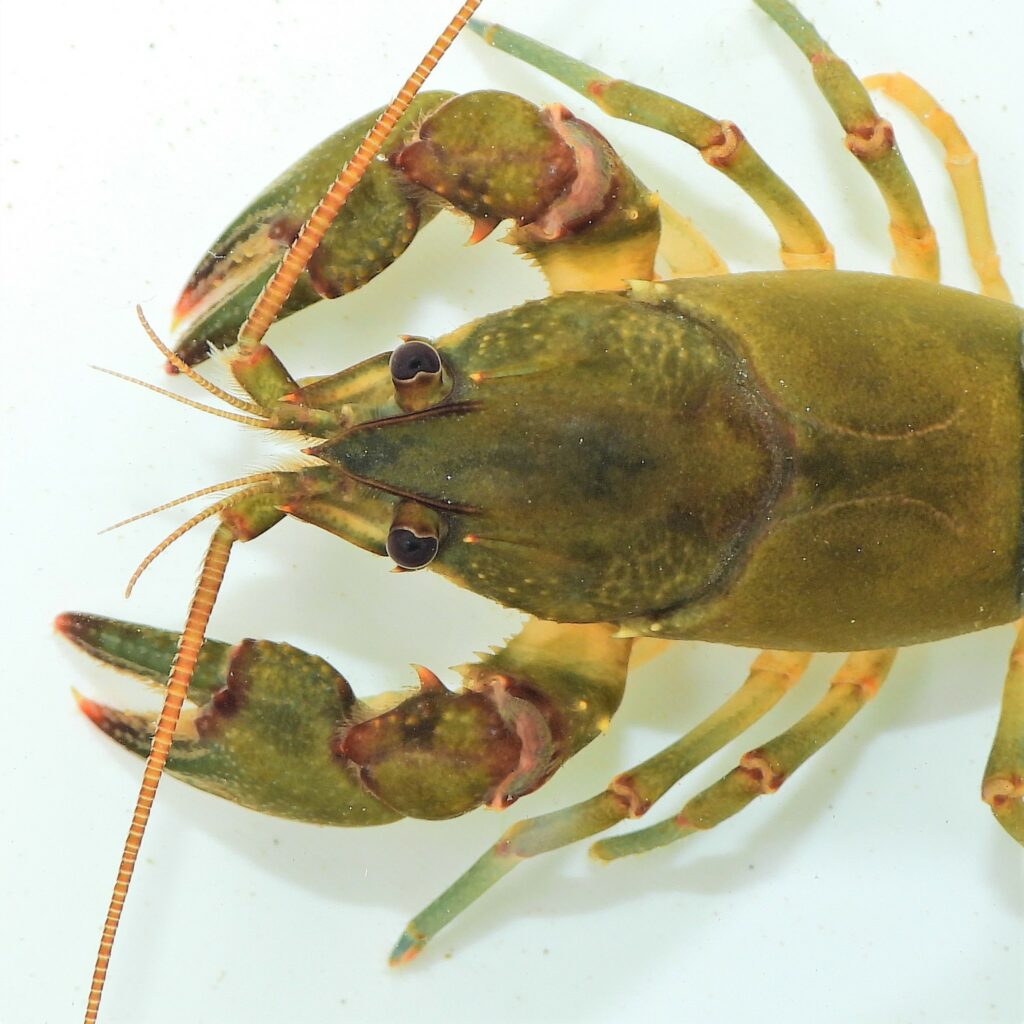
The Montgomery County Department of Environmental Protection (DEP) and Montgomery Parks are raising awareness about local “Critters in Crisis.”
According to County natural resource specialists, pollution in creeks and streams is negatively impacting wildlife. Certain insects, fish and amphibians are considered at-risk locally — the result of habitat loss, fluctuations in the water’s oxygen content and other man-made threats.

Acuminate Crayfish, courtesy of the Montgomery County Department of Environmental Protection.
The critters in include the American Eel, Acuminate Crayfish, Giant Stonefly, Marbled Salamander and the Yellow Lance Mussel. Each has a unique history to Montgomery County and interesting attributes. These include:
- American Eel—the only fish in the area that begins life in seawater (Bahamas and Bermuda area) and travels to freshwater streams for adulthood. More information is available on MyGreenMontgomery.org.
- Acuminate Crayfish—unique to Montgomery and Prince George’s counties (found largely in the Anacostia watershed). More information is available on MyGreenMontgomery.org.
- Giant Stonefly—very sensitive to water pollution. Its lack of abundance is an indicator of less than pristine conditions. More information is available on MyGreenMontgomery.org.
- Marbled Salamander—has a poison tail that helps fend off predators. More information is available on MyGreenMontgomery.org.
- Yellow Lance Mussel—Federally-threatened species in Maryland, not found in Montgomery County for more than 50 years until DEP biologists recently found them in the Patuxent Watershed. More information is available on MyGreenMontgomery.org.
DEP’s programs such as RainScapes, Tree Montgomery and Green Streets help to reduce pollution from flowing into creeks and streams.
County residents can play a part in reducing pollution by planting native trees and plants, reducing or replacing non-porous surfaces like driveways and sidewalks, and using environmentally friendly soaps when washing cars at home. When it rains, everything left on the ground will get washed into creeks, streams, rivers and the Chesapeake Bay.
DEP regularly monitors County creeks and streams for biological, chemical and physical stream changes and trends. Biologists test water for oxygen content and assess habitats and stream features for changes.
The International Union for Conservation of Nature’s (IUCN) Red List ranks species around the world on a scale from least concern to extinct. According to the IUCN, the American Eel is considered endangered. The Yellow Lance Mussel holds the designation of “near threatened,” while the Acuminate Crayfish and the Marbled Salamander are in the “least concern” category. The Giant Stonefly is not on the Red List.
Previous post:
County Illustrates How Residents Can Protect At-Risk ‘Stream Critters’


Comments are closed.